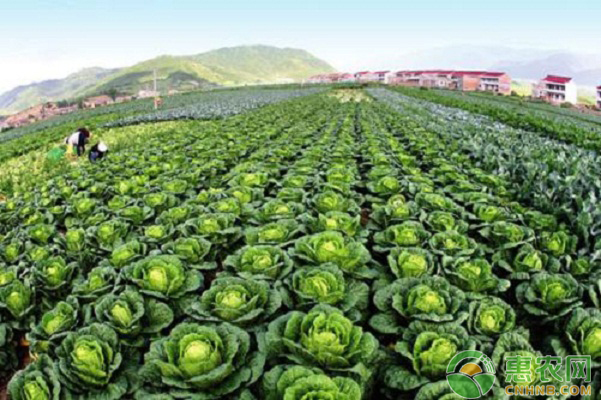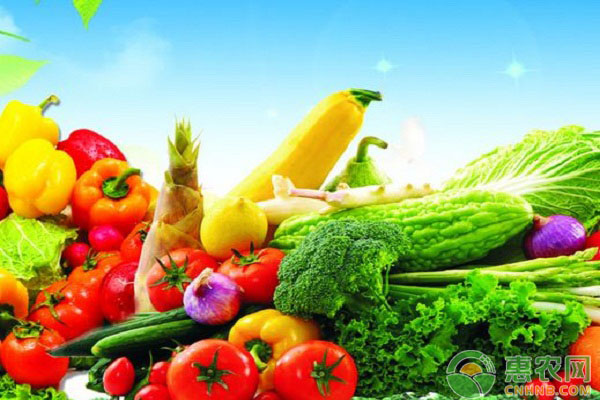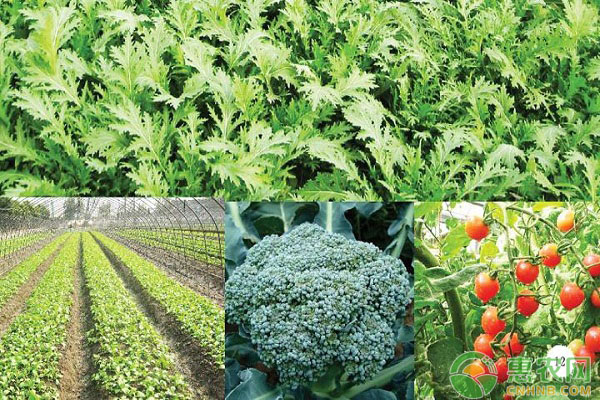With the improvement of people's living standards, everyone's requirements for green food are getting higher and higher. The pollution-free food meets the needs of the market. The pollution-free vegetables are produced in strict accordance with the safety standards and cultivation techniques of pollution-free vegetable production. High-quality, nutritious vegetables, explore the cultivation techniques of pollution-free vegetables.

1. Pollution-free vegetable cultivation technology
The development of pollution-free vegetables, the focus is on the selection and improvement of good production bases, the harmlessness of planting processes, and the detection of residual pesticides in vegetables, “three customsâ€, focusing on the environment of production, selection of varieties, cultivation of strong seedlings, fitness cultivation, pest control, quality Detect "six major links." In general, it adopts technical measures for the production of pollution-free vegetables, so that the base environment, production process and product quality meet the requirements of pollution-free standards.
2. Field planting and management
(1) Different types of vegetables are grown depending on the type of soil.
(2) Fine land preparation.
(3) Colonization, according to the requirements of different varieties, reasonable close planting.
(4) cultivating, weeding, and soil cultivation.
(5) Scaffolding, pruning, and fruit thinning.
(6) Temperature management of small arch sheds and greenhouses.
3. Basic principles and methods of irrigation
3.1 Basic principles
(1) Sand soil is often filled with water, and clay loam should be drained in deep trenches. Low-lying land, "small water and water pouring", "drainage and flood prevention."
(2) See the sky to see the seedlings irrigation. Sunny, hot days, more irrigation, cloudy or cold days, less irrigation or no irrigation, leaves no nourishment at noon, mild wilting less irrigation, and vice versa. Watering in the summer must be done before 9:00 in the morning or after 5 in the evening to avoid watering at noon. If there is a small thunderstorm at noon during the summer, you should immediately irrigate.
(3) Irrigation according to different vegetables and water demand during the growing season.
3.2 Irrigation methods
(1) Furrow irrigation: The furrow irrigation is drained immediately after the soil absorbs water to a height of 1/2~2/3. Summer should be carried out later in the evening. (2) Watering: Every time you need to pour your feet, short-term green leafy vegetables do not have to be watered every day.

4. Basic principles and methods of fertilization
4.1 Fertilization principles
(1) Mainly use organic fertilizers such as composted manure and compost, supplemented by mineral chemical fertilizer. It is forbidden to use municipal waste fertilizer. Raw vegetables such as lettuce and alfalfa are forbidden for manure and manure for topdressing.
(2) Strictly control the amount of nitrogen fertilizer applied, otherwise it may cause nitrate accumulation in the body.
4.2 Application method
4.2.1 base fertilizer, topdressing.
(1) 70% of nitrogen fertilizer is used as base fertilizer, 30% is used as top dressing, and 60% of nitrogen fertilizer is topdressing.
(2) Organic fertilizer, mineral phosphate fertilizer and grass ash are all used as base fertilizer, and other fertilizers can be partially used as base fertilizer.
(3) Organic fertilizer and chemical fertilizer are mixed to make base fertilizer.
4.2.2 Topdressing shall be carried out according to the “Baotou attack and control tailâ€.
(1) Applying thin fertilizer mainly based on nitrogen fertilizer in the seedling stage; the main stage of vegetable growth is topdressing, pay attention to the proportion of nitrogen, phosphorus and potassium in proportion; less top dressing or no top dressing before harvesting period.
(2) Focus on fertilization of various types of vegetables. I. Root vegetables, onion and garlic, and yam are the main focus of fertilization in the period of bulb or root enlargement. II. Cabbage, cabbage, and mustard are the focus of fertilization at the beginning of the ball or at the beginning of the flower ball. III. Melons, solanaceous fruits, and beans are the focus of fertilization after the first flower is solid.
4.2.3 Precautions.
(1) Look at the top dressing: the temperature is higher, the south wind is more topdressing, the low temperature, the north wind is less topdressing or not topdressing.
(2) Topdressing should be combined with manual irrigation, cultivating and soil-cultivating operations, and factors such as weather conditions and soil water content should be considered.
4.2.4 Root dressing (foliar fertilizer).
4.3 Improvement of harmful substances in the soil
4.3.1 Short-term leafy vegetables, 20 kg of lime per acre or 1000 kg of manure or 1.5 kg of sulfur (about 6.5 soil pH), with the application of base fertilizer.
4.3.2 For long-term vegetables, the amount of lime is 25 kg and the amount of sulphur is 2 kg.

5. Integrated pest prevention and control technology for pollution-free vegetables
The comprehensive prevention and control technology of vegetable pests and diseases is the most critical link in the production of pollution-free vegetables. Principles of prevention and control: First, cultivate and select a series of measures to resist and resist disease and pests, regulate the growth period of vegetables, and improve the resistance of vegetables to pests and diseases; second, prevent new pests from invading, and adopt existing pests and diseases. Lower the wintering technology, cut off the transmission route and other means to prevent disease infestation, or eliminate the pests before serious damage; Third, cultivation management, improve the vegetable field ecosystem, create a vegetable growth and development that is conducive to the development of pests and diseases. Environmental conditions.
5.1 Agricultural control.
By adopting a set of agricultural measures such as anti-(resistant) pests and diseases, taking fitness training, and rational rotation, the resistance of vegetables is improved and pests and diseases are alleviated.
5.2 Physical control.
It is an ideal method for the prevention and control of pollution by creating a control method that is not conducive to the occurrence of pests and diseases but which is beneficial to or does not hinder the growth of vegetables.
5.3 Biological control.
Biological control is the use of organisms or their metabolites to control harmful animal or plant populations, harmful microorganisms or to reduce the extent of their damage.
5.4 Chemical control.
Non-polluted vegetables are not without chemical pesticides. Chemical pesticides are an effective means to control vegetable pests and diseases. Especially when disease epidemics and pests break out, they are more effective prevention and control measures. The key is how to use them scientifically and rationally, not only to control pests and diseases, but also to control pests and diseases. Reduce pollution and keep pesticide residues in listed vegetables within the allowable range.
In addition to selecting environmental conditions, improving ecological conditions in the field, and improving cultivation and management measures, we must do the following two tasks:
The first is self-test before harvesting. Check whether the safety interval of using pesticides and fertilizers has passed, and the conditional available quick test card (paper) or instrument can be used for pesticide residue detection.
The second is harvesting and grading. It is necessary to harvest at a proper time, and to obtain a clean food after harvest (according to the sensory requirements of various vegetables, when the water is washed with water, the water quality should meet the prescribed standards), and also according to quality, color, individual size, weight, freshness, Grading is carried out in terms of whether or not there is a disease. There are three levels of special grade, first grade and second grade.
Shaft Collar
Shaft Collars are common pieces of hardware used for holding bearings and sprockets to shafts, situate components in motor and gearbox assemblies, and serve as mechanical stops. Shaft collars can be found in virtually any type of machinery and are frequently accessories to other components. Shaft collars provide three primary functions: 1) holding components in place, 2) locating or positioning components on a shaft, and 3) creating an attachment between shaft and another component. Despite their simple design, shaft collars play an important role in a wide range of industrial applications.
Yokelink Shaft Collars come in both inch and metric sizes and are available in either Carbon steel or 304 Stainless Steel. Yokelink shaft collars includes set-screw collars as well as one-piece (single-split) and two-piece (double-split) collars with zinc plated or black oxide finish. Our shaft collars are available for most common sizes ranging from 3/16″ to 4″ and 5mm to 100mm. When you need Shaft Collars, refer to our catalog, we offer them in a full selection of sizes, provide the diameter or part number to get a quote on these shaft collars, leave your message, or send us an email. You can also call us to get answers to your questions and place your order.

Shaft Collars,Zinc Plating Shaft Collars, set-screw collars, single-split Shaft Collar
Ningbo Yokelink Machinery Co.,Limited , https://www.yokelink.com